
Putrajaya, officially the Federal Territory of Putrajaya, is the administrative centre of Malaysia. The seat of the federal government of Malaysia was moved in 1999 from Kuala Lumpur to Putrajaya because of overcrowding and congestion in Kuala Lumpur, whilst the seat of the judiciary of Malaysia was later moved to Putrajaya in 2003. Kuala Lumpur remains as Malaysia's national capital city per the constitution and is still the seat of the head of state and the national legislature, as well as being the country's commercial and financial centre.
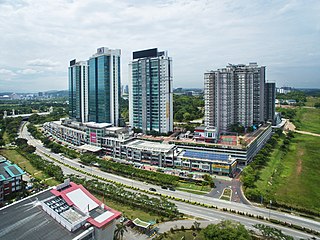
Cyberjaya is a city with a science park as its core that forms a key part of the Multimedia Super Corridor in Malaysia. It is located in Sepang District, Selangor. Cyberjaya is adjacent to and developed along with Putrajaya, Malaysia's government seat. This city aspires to be known as the Silicon Valley of Malaysia.

The National Museum is in Jalan Damansara, in Kuala Lumpur, Malaysia. The museum is close to Perdana Lake Gardens and it provides an overview of Malaysian history and culture. Its façade comprises elements from both traditional Malay and modern features. It was inaugurated on 31 August 1963, and it serves as a repository of Malaysia's cultural and historical heritage.

The National Mosque of Malaysia is a mosque in Kuala Lumpur, Malaysia. It has a capacity for 15,000 people and is situated among 13 acres (53,000 m2) of gardens. Its key features are a 73-metre-high (240 ft) minaret and a 16-pointed star concrete main roof. The umbrella, synonymous with the tropics, is featured conspicuously – the main roof is reminiscent of an open umbrella, the minaret's cap a folded one. The folded plates of the concrete main roof are a creative solution to achieving the larger spans required in the main gathering hall. Reflecting pools and fountains are spread throughout the compound. Completed in 1965, the mosque is a bold and modern approach in reinforced concrete, symbolic of the aspirations of a then newly independent nation.

The Perdana Putra is a building in Putrajaya, Malaysia which houses the office complex of the Prime Minister of Malaysia. Located on the main hill in Putrajaya, it has become synonymous with the executive branch of the Malaysian federal government.

The Palace of Justice houses the Malaysian Court of Appeal and Federal Court, which moved to Putrajaya from the Sultan Abdul Samad Building in Kuala Lumpur in 2003.
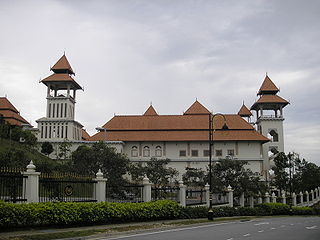
Istana Melawati is the second national palace of Malaysia's Yang di-Pertuan Agong in Putrajaya after the Istana Negara in Kuala Lumpur. It serves as a royal retreat for the Yang di-Pertuan Agong.
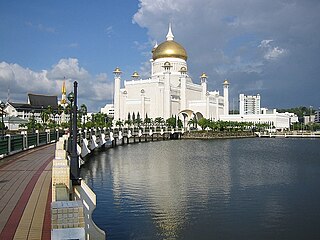
Islam is Brunei's official religion, 82.70 percent of the population is Muslim, mostly Sunnis of Malay, Arab and Indian origin who follow the Shafi'i school (76%) Hanafi and Maliki school (6%) of jurisprudence. Most of the other Muslim groups are Malay Kedayans, local Chinese and Dayak Iban converts. Islam was introduced to Brunei by traders arriving from Persia, Arabia, China and the Indian subcontinent. Therefore, other religions can be practiced freely.
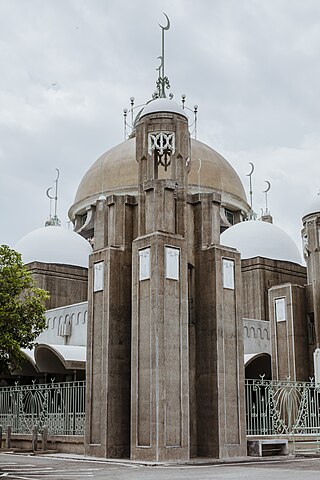
Sultan Sulaiman Royal Mosque is Selangor's royal mosque, which is located in Klang, Selangor, Malaysia. It was constructed by the British in the early 1932 and was officially opened in 1933 by the late Almarhum Sultan Sir Alaeddin Sulaiman Shah.
The Saidina Abu Bakar As Siddiq Mosque (MSABA) is a prominent mosque in Bangsar, Kuala Lumpur, Malaysia. The mosque was named after Muhammad's successor (Caliph) Abu Bakr.
Personal names in Malaysia vary greatly according to ethno-cultural group. Personal names are, to a certain degree, regulated by the national registration department, especially since the introduction of the National Registration Identity Card (NRIC).

Universiti Sultan Zainal Abidin is the 18th public institution of higher learning, located in the state of Terengganu, Malaysia. The university is a creature of the Act of Parliament known as the Universities and University Colleges Act 1971, with its constitution laid down under the Universities and University Colleges (Universiti Sultan Zainal Abidin) Order 2010. It is the first full-fledged university in the east coast of Peninsular Malaysia and the first university to be based on the “cluster” concept. It is also the first university in Malaysia to be modelled after University of London, United Kingdom.

Architecture in Malaysia traditionally consist of malay vernacular architecture. Though modern contemporary architecture is prevalent in urban areas there are style influences from Islamic, colonial architecture, chinese straits etc. New materials, such as glasses and nails, were brought in by Europeans, changing the architecture.
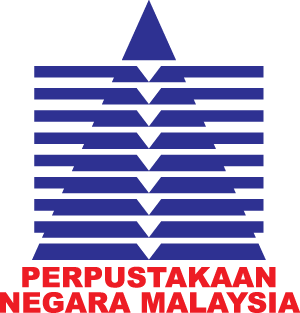
The National Library of Malaysia (PNM) is a library established under the National Library Act 1972 in Kuala Lumpur, Malaysia.
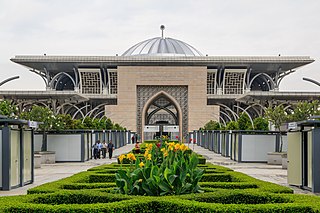
The Tuanku Mizan Zainal Abidin Mosque or the Iron Mosque is the second principal mosque in Putrajaya, Malaysia after Putra Mosque. It is located in Putrajaya's Precinct 3, opposite the Palace of Justice and next to Islamic Complex Putrajaya, a religious authority headquarters. Construction began since April 2004 and was fully completed on August 2009. It was officially opened by the 13th Yang di-Pertuan Agong, Tuanku Mizan Zainal Abidin on 11 June 2010.

The Ministry of Defence, abbreviated MINDEF or KEMENTAH, is a ministry of the Government of Malaysia that is responsible for defence, national security, army, navy, hydrography, air force, armed forces, intelligence services, counterintelligence, military intelligence, national service, and veterans affairs.

Sekolah Menengah Agama Persekutuan Labu or formerly Sekolah Menengah Agama Wilayah Persekutuan (SMAWP) is one of the three federal-funded Islamic Religious secondary boarding schools in Malaysia and is in Labu, one of the small towns in north Seremban, Negeri Sembilan. The school used to be located in Klang (1982) and Petaling Jaya (1983–87), Selangor and named Sekolah Menengah Agama Wilayah Persekutuan, before it moved to Labu in 1987. The school is known as one of the Sekolah Kluster Kecemerlangan and Sekolah Berprestasi Tinggi.
Dato’ Seri Nik Mohamed bin Nik Mahmood is a Director of Kumpulan Senireka Sdn Bhd., a large commercial architecture firm in Kuala Lumpur, Malaysia. Mahmood founded the firm in 1973 after he left the Public Works Department. The firm specializes in commercial highrise buildings, and they have done some significant religious buildings. In the 1970s they were operating in the Brutalist idiom, but they turned to Postmodernism at the end of the century and were responsible for some prominent postmodern buildings in Malaysia, including the Menara Axis, 2002, Istana Negara Baru and the Kompleks Dewan Bahasa & Pustaka.

The Mosque ofKota Iskandar is a Johor state mosque located at Kota Iskandar, Iskandar Puteri, a Johor State Administrative Centre at Johor Bahru District, Johor, Malaysia. It is the second state mosque of Johor after Sultan Abu Bakar State Mosque in Johor Bahru. This modern futuristic mosque was officially opened on 16 June 2015 and was named after the late 24th and fourth sultan of Johor, Almarhum Sultan Iskandar ibni Almarhum Sultan Ismail.

Jamek Mosque, officially Sultan Abdul Samad Jamek Mosque is one of the oldest mosques in Kuala Lumpur, Malaysia. It is located at the confluence of the Klang and Gombak rivers and may be accessed via Jalan Tun Perak. The mosque was designed by British architect and soldier Arthur Benison Hubback, and built in 1909. It was the principal mosque of Kuala Lumpur until the construction of the national mosque Masjid Negara in 1965.

















